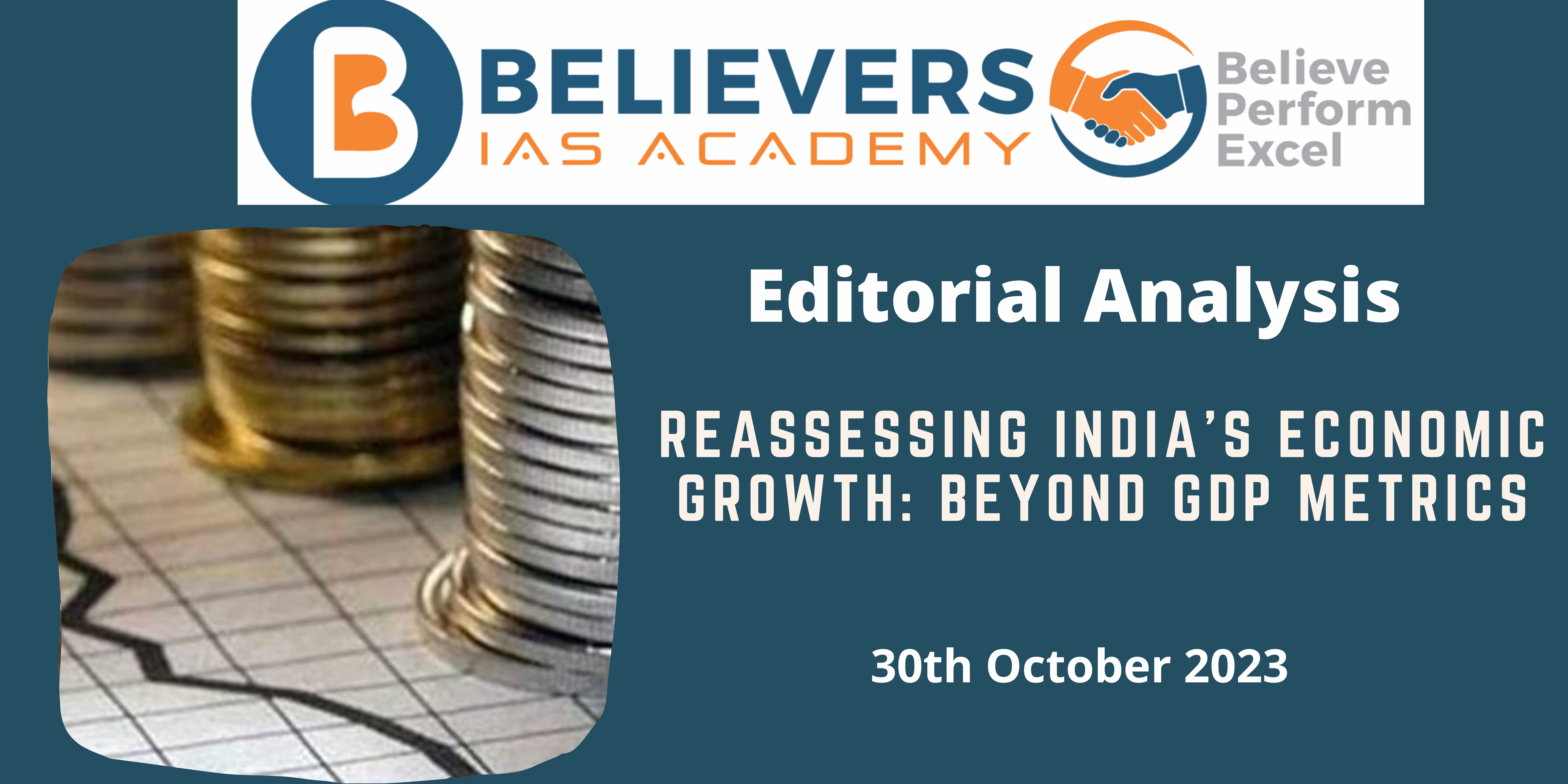Reassessing India’s Economic Growth: Beyond GDP Metrics
Context:
The celebration of India’s GDP growth, particularly amid economic challenges, raises questions about the validity of GDP as a true measure of economic progress. The glorification of GDP masks underlying issues like inequalities, job scarcities, insufficient healthcare, failing infrastructure, and environmental degradation. Revisiting India’s growth story beyond GDP unveils a reality far more complex and critical than numerical figures suggest.
Relevance:
GS-03 (Indian Economy- Inflation, Monetary Policy, RBI)
Prelims:
GDP, National Income Accounting, GDP trends
Mains Question:
Evaluate the limitations of GDP as a sole measure of economic prosperity and its inadequacy in capturing the comprehensive economic landscape of a nation. (250 words)
Dimensions of the Article:
- Reconsidering GDP as an Indicator
- Flaws in GDP Growth Patterns
- Post-COVID Economic Landscape
Reconsidering GDP as an Indicator:
- The main emphasis on GDP as a measure for economic success fails to reflect the true socio-economic scenario.
- While GDP forecasts growth, it also conceals the realities of disparities, job scarcities, inadequate public services, and environmental damages.
- India’s GDP fails to account for the genuine purchasing power and well-being of its populace.
Flaws in GDP Growth Patterns:
- India’s historical growth trajectory does not align with the ‘fastest-growing’ narrative it aims to portray.
- Despite initial improvements in GDP growth, the reality shows a slowdown in recent years, particularly attributed to weakened mass demand.
- Severe dips in private corporate investments and a persistent drop in purchasing power hint at underlying weaknesses in the economy, even before the onset of the COVID-19 pandemic.
Post-COVID Economic Landscape:
- Post the COVID-19, the economy experienced fluctuations, marked by sharp declines, modest recoveries, severe slowdowns and spikes here and there.
- A nuanced evaluation, considering various timeframes, reveals varying annual growth rates.
- The glaring signs of weak demand post-COVID are evident in the continual decline of private corporate investments, dwindling savings rates, and heightened debt among households, impacting consumption patterns and exacerbating economic concerns.
Conclusion:
A holistic evaluation that considers societal well-being, equitable distribution, and sustained demand growth is essential for formulating policies that genuinely address the needs of the nation’s economy. This demands a shift in approach from an exaggerated growth narrative to a more nuanced, inclusive, and realistic economic assessment.




